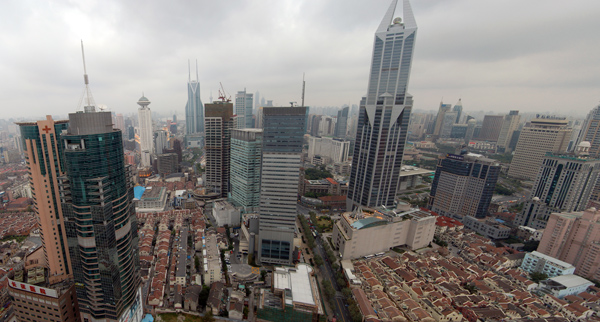The Skyscraper Museum is devoted to the study of high-rise building, past, present, and future. The Museum explores tall buildings as objects of design, products of technology, sites of construction, investments in real estate, and places of work and residence. This site will look better in a browser that supports web standards, but it is accessible to any browser or Internet device.
Puxi: Overview

Photo by Jakob Montrasio
Puxi is the historic core of Shanghai. Today Renmin Road and Zhonghua Road trace the circle of Shanghai's 16th century fortification walls. The 26 foot tall and 2.8 mile long wall had six gates and four water entrances. From the 1840s, the heart of colonial Shanghai was the Bund (embankment) where trading houses, banks, and landmark buildings created the city's first skyline. In the North Bund, south of Suzhou Creek, cultural and religious institutions clustered near the park and British consulate. This is the site of the current Rockbund redevelopment project. In 1849, the French established their government and concession, which was squeezed between the British settlement and the Chinese city. The first secret meeting of the Communist party was held in the French Concession area in 1921, a site of national significance and adjacent to Xintiandi. Development in Puxi often proceeds in a patchwork approach with several blocks of low-rise lane housing demolished for new high-rise construction. Still, new buildings relate to the life of the street.
